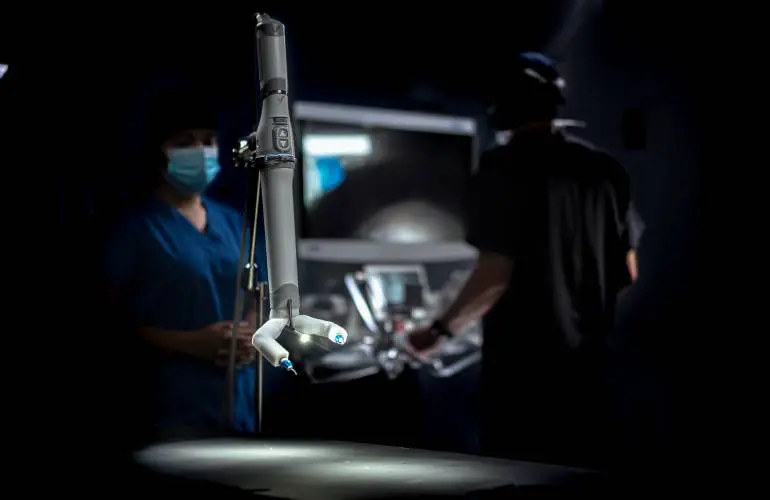The state of Nebraska needs skilled workers. Badly.
University of Nebraska Provost Susan Fritz last year acknowledged that that state faces demand for 15,000 new workers in engineering and computer science alone by 2026. Speaking generally of the gap between supply and demand of skilled labor in early 2019, former NU president Hank Bounds called it a “workforce crisis.”
Indeed, over the last 10 years, the state saw more than 19,000 highly educated, working-age adults choose to leave the state. In an effort to head off a self-fulfilling prophecy that Nebraska really isn’t for everybody, state leaders in education, government, and industry are hoping a new scholarship program focused on workforce development will help combine with efforts like statewide economic development plan Blueprint Nebraska to reverse the state’s more troubling workforce trends in high-demand fields like engineering, health care, math and information technology.
Beginning in Spring 2021, the Nebraska Career Scholarships program will funnel $16 million in state funding over the next four years to students enrolled in pertinent programs within the University of Nebraska system, the Nebraska state college system, and the community college system. Half of the four-year funding for the Nebraska Career Scholarships program authorized by state legislators under LB 1008 is earmarked for students matriculating in the NU system; the other half is to be split between the state colleges and community colleges.
NU President Ted Carter acknowledges that satisfying industry demand for these workers is a tall order—the NU system presently graduates about 2,500 students a year in areas targeted by the new scholarships—and one that can’t be accomplished overnight. But, he says, partnerships and strategies are in place to help keep more talent in and attract more talent to Nebraska.
BECOME A SPONSOR
Join us in championing the narrative of success, resilience, and ingenuity that defines Nebraska’s startup community. Learn more »
Take, for example, the Nebraska Promise Scholarship, which offers full tuition to academically eligible students who meet income requirements or are Pell Grant-eligible. Carter says that program is designed to expand the pool of would-be students to include those who might not have otherwise considered pursuit of a four-year degree.
“That (scholarship) wasn’t designed just to give free tuition to Nebraskans. That’s to create opportunities for young people coming out of high school that might’ve thought college education wasn’t accessible to them,” Carter said.
Other more targeted initiatives to address the skills gap include a major $160 million overhaul of the state flagship university’s engineering facilities on the Lincoln campus, which presently rank among the most run-down of all 900+ buildings within the NU system. Growth resulting from the College of Engineering expansion is expected to accommodate a 50% boost in enrollment to 5,000 students in the coming years. (Last year, UNL’s College of Engineering conferred just under 600 degrees and reported enrollment of approximately 2,900 students for the 2020-2021 school year.)
In Omaha, Tammy Green of Metro Community College’s Workforce Innovation Division continues to help steer knowledge-hungry learners into initiatives connected with Metro’s career placement program, which connects students, career coaches and local businesses.
“Most of the time, businesses’ retention rates for new hires run around 50%,” said Green, the division’s Director of Workforce and IT Innovation. “We have shown retention rates of 97% as students come through our training programs and career coaching. We’re just blowing it out of the water … and we’re able to do it with what are customarily considered to be high barrier-to-employment populations.”
Green says one key to success is close coordination between Metro stakeholders and local industry. What works in Omaha isn’t necessarily a solution to the workforce challenges facing businesses in the Panhandle, or even in Lincoln: “If you look at CNAs within our community, they don’t get paid a livable wage, or really anything even close to it unless they’ve got experience. Looking at CNAs in other communities, they’re paid really close to a livable wage, just to start out.”
In other words, continuous communication and collaboration is just as critical to successfully addressing community-specific workforce needs as the connections between labor and industry.
Of the top 10 so-called “H3” occupations in Nebraska, only four require job training, and just one requires work experience. These high-wage, high-skill, high-demand—hence the H3 moniker—positions include registered nurses and software developers.
For his part, NU’s Carter is acutely aware of the importance of collaboration. He says he and his cohorts remain in close contact with local and statewide business leaders and workforce development officials to coordinate resources and develop effective strategies to close the state’s skills gap. Formal public-private partnerships like Blueprint Nebraska aim to capitalize on the spirit of collaboration that has already shown significant promise in cases like Metro’s.
“I equate this to driving an aircraft carrier,” Carter said. “It’s powerful and big and really cool to look at, but it doesn’t turn really well. You’ve got to plan this well and give yourself enough turn space to be able to navigate these challenges.”
—
This article was written by SPN contributor Cole Epley. Cole is a freelance journalist and aspiring bicycle tourist living in Council Bluffs, Iowa. His award-winning business reporting on topics including energy and utilities, banking, payments and real estate has been published in the Omaha World-Herald and affiliates, as well as in the Memphis Business Journal and American City Business Journals affiliates.



